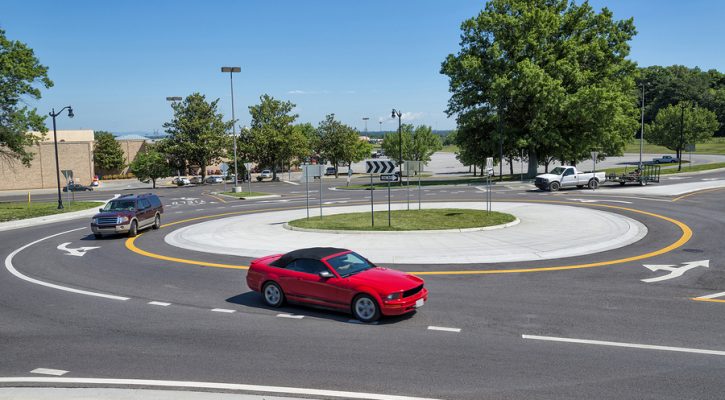
Replacing Signal Intersections With Roundabouts
November 10, 2016
By replacing their signaled intersections with roundabouts , Carmel Indiana, a suburb of Indianapolis, made a bold decision to spend more money up front in order to save a lot more money in the long run. While they were at it, they saved quite a few lives and prevented a lot of injuries.
Roundabouts are intersections designed to keep traffic moving more smoothly through intersections without the need for traffic lights. Roundabouts accomplish their mission by forcing traffic to slow down while allowing traffic from all directions to enter the intersection without having to stop. Since 2001, the city has built or replaced more than 100 intersections using roundabouts and there are plans to build even more. They hope to have the work completed by 2018.
Even though traffic is forced to slow when entering an intersection, it rarely has to stop. However, if a vehicle does need to stop while yielding to another vehicle, it doesn’t have to stop for long. The driver can enter the intersection as soon as traffic is clear without having to wait for a green light. Europe adopted roundabouts long ago and they’re becoming more common every year but the US didn’t adopt the idea until the 1990s and roundabouts here are few and far between.
By replacing their intersections with roundabouts, the city of Carmel saw dramatic results:
- Roundabout construction costs an average of $125,000 less than a signaled intersection.
- No more money is spent on maintaining or replacing traffic signals.
- Roundabouts don’t fail to operate when there’s a power outage.
- Without having to idle while waiting at a light, observations at ten study sites show an average gas savings of 24,000 gallons per year.
- Less gas used means less pollution.
- Each replacement intersection can handle a 30 to 50 percent increase in traffic flow.
- Less time spent in traffic means greater productivity.
- With all traffic going in the same direction, there are fewer serious crashes.
- Head-on and high speed right angle collisions are much less likely at roundabouts.
- Slower speeds give drivers more reaction and decision making time.
- Roundabouts are safer for pedestrians.
- Injury crashes were reduced by almost 80% at intersections replaced by roundabouts.
- Overall, crashes were reduced by 40%.
- Fewer crashes mean lower costs for first responders.
- Fewer crashes mean first responders can focus on other needs.
To save money and lives, more cities and counties need to consider following Carmel’s lead.
For more information, visit: City of Carmel Indiana
